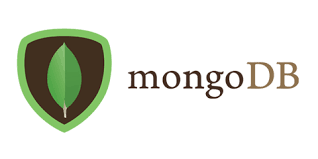MongoDB's successful IPO reflects its differences with traditional open source


MongoDB had a good first day of trading with share prices popping roughly 25% over their opening. As the latest big data platform company to IPO, Mongo's fortunes are being compared and equated to Cloudera and Hortonworks.
As upstarts, each is in a race to grow business while whittling down the red ink. Cloudera and Hortonworks are a bit further along this path as their operating losses have begun trending downward - but that happened only after those companies went public.
Don't expect a sudden spurt of expanded product development with the IPO. Having raised in excess of $300 million in venture funding, the company already had the resources for building product. The bulk is likely to be funneled into expanding its global market presence.
Admittedly, the first day of trading is no predictor; while Cloudera and Hortonworks shares didn't measurably increase their prices for several days, the flatness of their share prices (after several spikes) since then have largely been attributable to secondary financings and slower-than-expected growth.
But there is a key difference between Mongo and the Hadoop crowd: while ostensibly open source, in actuality, MongoDB's business model is much akin to that of a proprietary software company. Developers can play with the code, but using an adaptation of the GNU Public License, developers must contribute code back to the community, which happens to be led by Mongo. There's no Apache community to deal with.
Another difference is that unlike Hadoop, MongoDB is known as an easy to use database. That should prime its market for faster growth.
In its S-1 statement, MongoDB stated that its database "was built by developers for developers." That has proven a double-edged sword. Like MySQL before it, MongoDB's developer-friendliness has often made it guilty until proven innocent in the eyes of enterprise IT. We've been following MongoDB's progress in building out enterprise-grade security, governance, manageability, and integration features. Nonetheless, MongoDB trots out examples like Barclays Bank, where it acts as an operational data store that buffers the mainframe with retail banking transactions.
Over the past year, MongoDB's business has seen key boosts from poaching customers from relational databases, and sharp growth with its Atlas managed cloud service. Close to 30% of its new customers have moved over from relational databases. Like Cloudera and Hortonworks, land and expand is very critical to MongoDB's business; in recent quarters, net dollar expansion rate (which measures the growth in contract size when customers renew) has hovered around the 120% level.
When we asked CTO Eliot Horowitz to comment on a rival's assertion that "the relational database era is passing," he did not disagree. But Horowitz's criterion - that relational databases are not suited for the "majority" of use cases, does not mean that relational databases are passé. While MongoDB (and other NoSQL databases) are adding connectors to BI and Spark computing, that does not make them data warehouses. And the same is true for classic ACID transaction databases that are used for balancing the books. Point taken, however, that while an organization will run its transaction on one (or a handful) of SQL OLTP databases, there are likely to be more new use cases for databases that won't require such architectures.
Another key point of growth is the cloud. As of the end of Q2 2017 (July 31), Mongo had over 4300 customers, roughly 1900 of which are using Atlas. According to CFO Michael Gordon, the bulk of Atlas customers are net new to MongoDB.
For players like MongoDB who serve on-premise and cloud customers, the cloud can be a double-edged sword. With Atlas now available on each of the three major clouds (it debuted on Amazon), the cloud has become a classic case of coopetition. They are pivotal to Atlas, but they also compete with their own NoSQL databases. It's the tradeoff between cloud-native proprietary databases that are designed for a specific cloud provider vs. general-purpose cloud-friendly database that can support hybrid deployments and provide the freedom of choice between clouds.
And with Microsoft Azure Cosmos DB providing a good example, MongoDB is going up against databases that are native to the cloud. Cosmos DB differentiates itself as a multi-model database that can run as a single logical instance across multiple regions, with a tunable consistency model. MongoDB has responded with support for cross-region replication.
Because it is poaching a growing proportion of workloads from relational databases, MongoDB tends to see the usual suspects of enterprise databases as its prime rivals. But as enterprises embrace the cloud, we expect more fancy footwork with its frenemies.